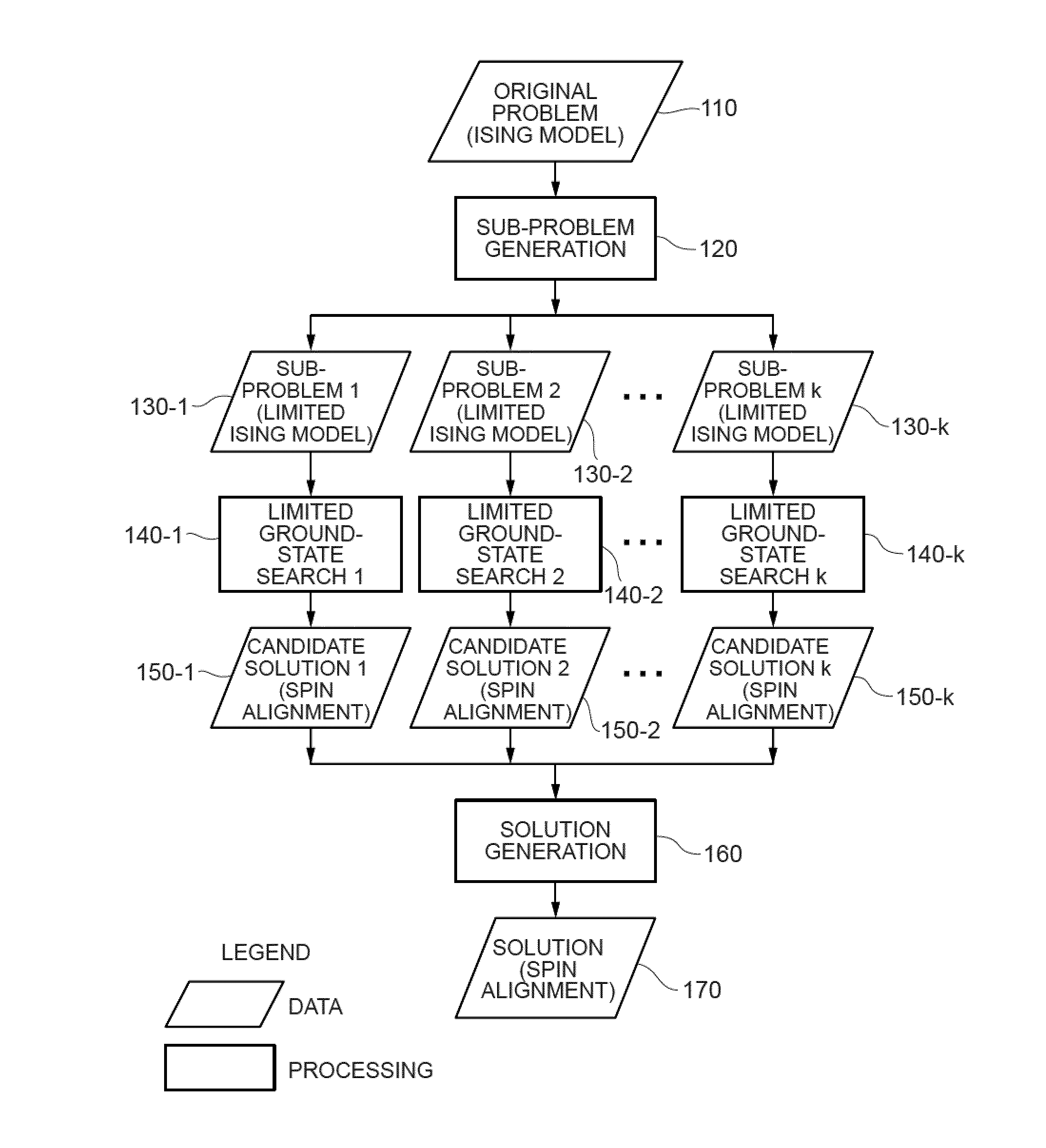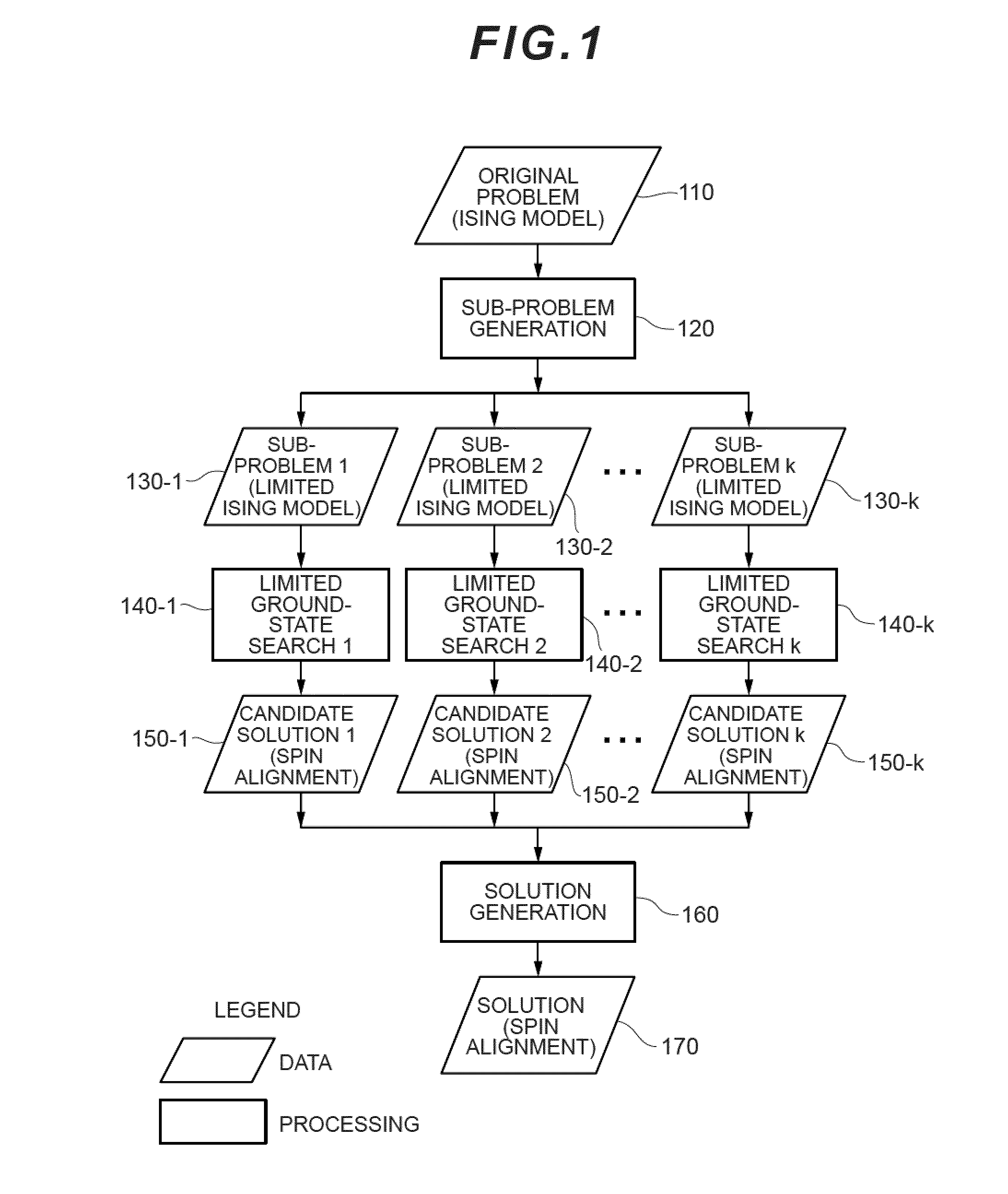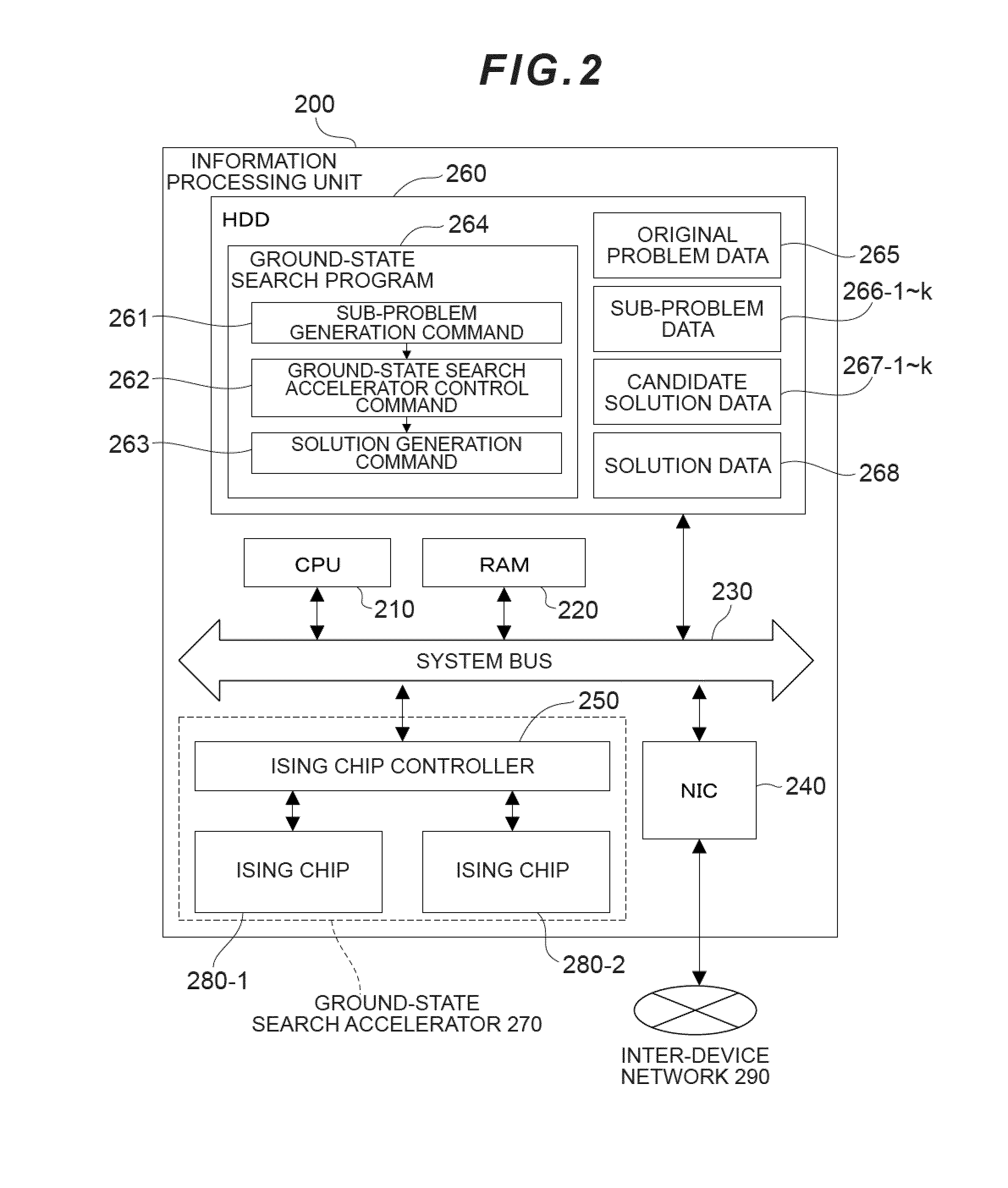Information processing apparatus and information processing method
a technology of information processing apparatus which is applied in the field of information processing unit and information processing method, can solve the problems of difficult calculation time to solve the problem of von neumann computers, unable to find the ground state of the ising model whose topology becomes a nonplanar graph, and limited types of coefficient values the hardware can retain
- Summary
- Abstract
- Description
- Claims
- Application Information
AI Technical Summary
Benefits of technology
Problems solved by technology
Method used
Image
Examples
first embodiment
(1) First Embodiment
[0070](1-1) Ising Model Extended to Directed Graph
[0071]In the present embodiment, a model extended from an Ising model and represented by the following expression will be hereinafter referred to as the Ising model.
[Math. 3]
[0072]E(s)=-∑i≠jJi,jσiσj-∑ihiσi(3)
[0073]The difference between the Ising model represented by Expression (1) and the model represented by Expression (3) is that Expression (3) permits interactions as shown in a directed graph. Generally, the Ising model can be drawn as an undirected graph according to graph theory. This is because interactions of the Ising model do not distinguish between an interaction coefficient Ji, j from the i-th spin to the j-th spin and an interaction coefficient Jj, i from the j-th spin to the i-th spin.
[0074]Since the present invention can be applied even by extending the Ising model and distinguishing between Ji, j and Jj, l, the Ising model which is formed into a directed graph is handled in the present embodiment. ...
second embodiment
(2) Second Embodiment
[0239]In the present embodiment, an explanation will be given about another example of an apparatus and method for implementing the ground-state search of the Ising model having coefficients of arbitrary values by using the apparatus and method for performing the ground-state search of the Ising model with the limited types of coefficient values.
[0240]In the present embodiment, the sub-problem generation 120 and the solution generation 160 are different from those in the first embodiment, so differences from the first embodiment will be explained.
[0241]In the first embodiment, the sub-problem generation 120 uses the random numbers (steps S2005, S2203, S2304, and S2402). However, generation of the random numbers may impose a heavy load in the environment where computer resources such as embedded systems are poor. Particularly, since as many random numbers as the quantity of the interaction coefficients and the external magnetic field coefficient need to be genera...
PUM
 Login to View More
Login to View More Abstract
Description
Claims
Application Information
 Login to View More
Login to View More - R&D
- Intellectual Property
- Life Sciences
- Materials
- Tech Scout
- Unparalleled Data Quality
- Higher Quality Content
- 60% Fewer Hallucinations
Browse by: Latest US Patents, China's latest patents, Technical Efficacy Thesaurus, Application Domain, Technology Topic, Popular Technical Reports.
© 2025 PatSnap. All rights reserved.Legal|Privacy policy|Modern Slavery Act Transparency Statement|Sitemap|About US| Contact US: help@patsnap.com



